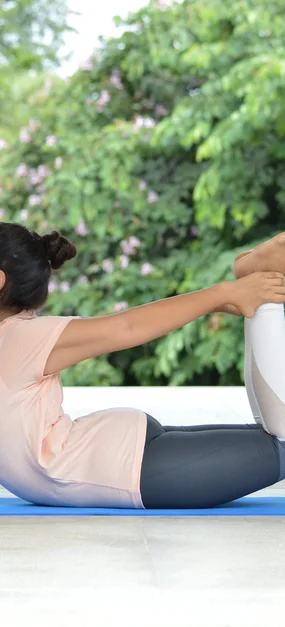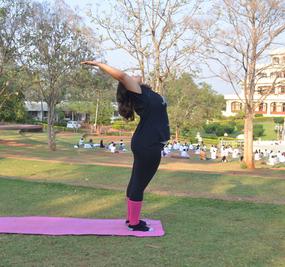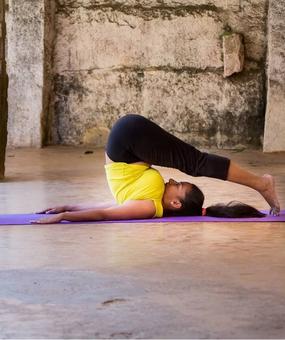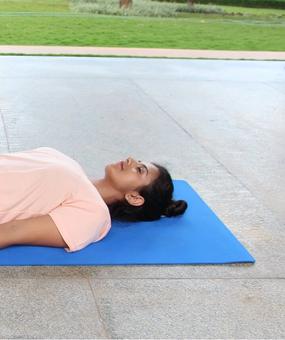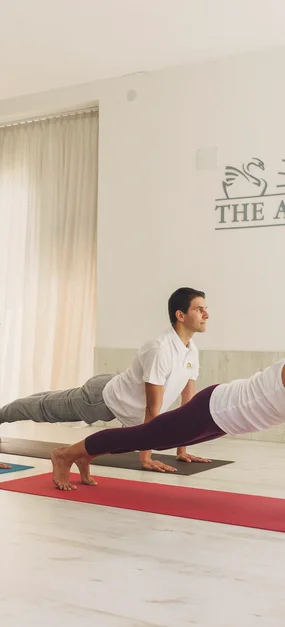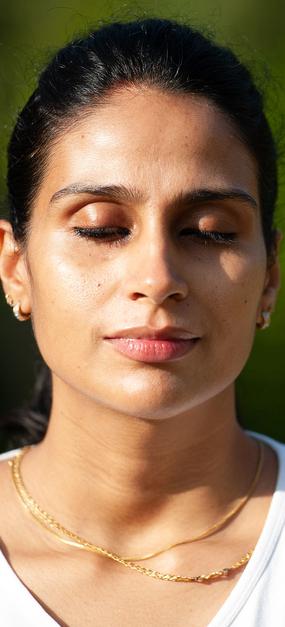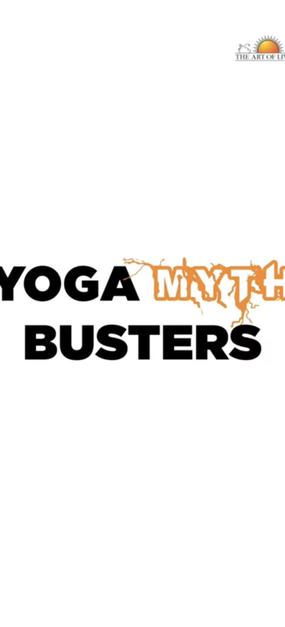Chakra, from the root (“to move”) means wheel and therefore this is the Wheel Posture. The chakra-asana is also known as the “urdhva-dhanurasana”. “Urdhva” means raised, elevated or upright and “dhanur” means bow. Both “wheel posture” and “raised bow posture” describe the appearance of this asana.
Level of Difficulty: Intermediate/Advanced
How to do Chakrasana
- Lie flat on the back in the shavasana (corpse pose).
- Lie on the stomach with the head turned to one side and the arms alongside the body with palms facing upward.
- Turn the head and place the chin on the floor. Exhale, bend the knees, reach back with the arms and grasp the right ankle with the right hand and the left ankle with the left hand.
- While inhaling, slowly raise the legs by pulling the ankles up and raising the knees off the floor while simultaneously lifting the chest off the floor. Hold the inhale breath. The weight of the body should be resting on the abdomen.
- Tilt the head as far back as possible. Hold the posture as long as you can comfortably hold the inhale breath.
- Slowly exhale bringing the knees to the floor, release the ankles, slowly bring the legs and arms straight down on the floor and turn the head to one side, assuming the prone posture you began with.
The chakrasana is either held for the duration of the inhaled breath or between one and three minutes while breathing gently through the nostrils. Repeat it two or three times.
Benefits of Chakrasana
- Increases energy and heat
- Strengthens the arms, legs, spine, and abdomen
- Opens the chest
- Stretches the shoulders
- Stretches the hip flexors and core
- Strengthens the glutes and thighs
- Increases flexibility in the spine
Precautions
- Back problems (especially lower)
- Shoulder injury
- Pregnancy
- High or low blood pressure
Modifications and Variations
- To modify: If you are a beginner and/or have limited flexibility in your spine, start with Bridge Pose.
- To increase challenge: Slowly move your hands closer to your feet, shortening the distance between your hands and feet and increasing the height of the wheel shape. Make sure to continue pressing firmly into your feet and shifting the weight towards your hands.
Preparatory Poses and Follow up Poses
- Standing Backward Bend | Ardha Chakrasana (Preparatory)
- Cat/Cow Stretch | Marjariasana and Bitilasana (Preparatory)
- Bow Pose | Dhanurasana (Preparatory)
- Fish Pose | Matsyasana (Follow-up)
While a regular yoga practice can result in improved health, know that it is not a substitute for medical treatment. It is important to learn and practice yoga under the supervision of a trained teacher. In the case of a medical condition, practice yoga after consulting a doctor.




